Michelangelo Merisi, known as Caravaggio, had an intense and passionate relationship with Rome, like his life and his works. The revolutionary power of Caravaggio's works has profoundly influenced all subsequent art and still today provokes a magnetic power in the spectator. The extraordinary use of light, the precision and refinement of details, the pictorial interpretation of the scenes makes Caravaggio an everlasting point of reference for the entire history of art.
Caravaggio arrived in Rome around the age of twenty and spent most of his life in this city, he began humbly making copies and portraits, but quickly acquired growing fame and began to dedicate himself to the creation of complex and grandiose works: masterpieces. And it is precisely among the Roman masterpieces of Caravaggio that we will bring you in this article, since Rome is fortunate to preserve the greatest number of works by this exceptional artist, scattered among churches, museums and galleries. Furthermore, this year until July 6 Palazzo Barberini hosts Caravaggio 2025, an exhibition with an exceptional number of autographed paintings by the great artist. Therefore, it is the best year to dedicate yourself to visiting all the works of Caravaggio in Rome, if you are planning a trip to the capital we suggest you consider the Visit Rome Pass, through a single card you will have access to the main attractions of Rome with also included unlimited access to public transport in Rome.
Discover the Visit Rome Pass and explore the city without worries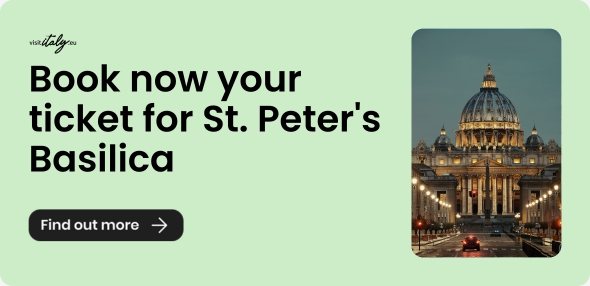
Where to find Caravaggio paintings in Rome?
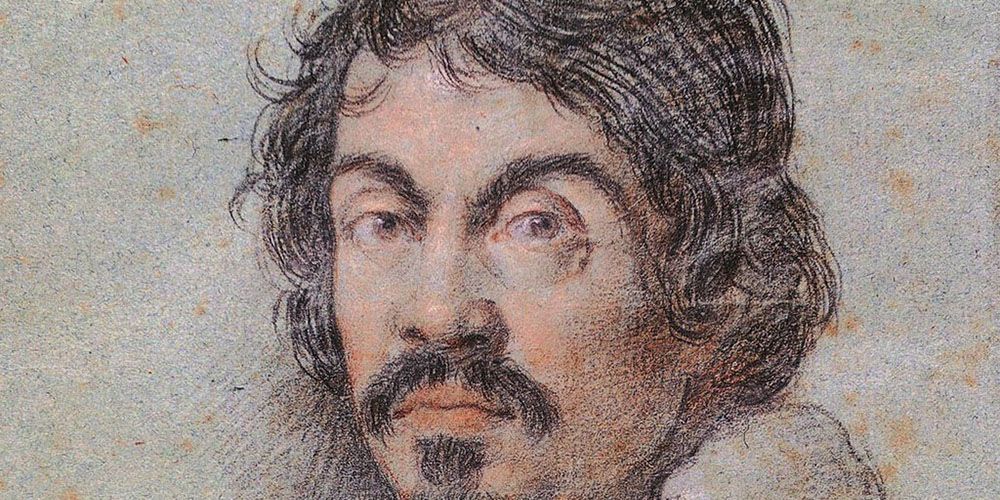
Caravaggio's works are alive, they move the imagination of those who look at them, it seems like you are there on the scene, direct witnesses of what is happening. Maybe that's why you can't stop looking at them, you would like to have infinite days to be able to dedicate one to each work, but time is what it is.
In this article we propose an itinerary to discover all the places where Caravaggio's works are kept in Rome, you can do it over several days, or choose only some works and places. The good news is that half of the works are housed in churches with free access and therefore visible for free. We will take you to see 21 works by Caravaggio, some places preserve more than one, the largest group of works is located in the Borghese Gallery. Are you ready to discover where you can see Caravaggio in Rome? It will also be an opportunity for a nice walk in the city.
Listen to the podcast version of the article with Monna Lisa and Leonardo's voices
9. The Church of San Luigi dei Francesi

Saint Matthew and the Angel
Here you can admire:
- The Calling of Saint Matthew
- Saint Matthew and the Angel
- The Martyrdom of Saint Matthew
Admission is free.
The first stop on our artistic itinerary in search of Caravaggio's works begins at the superb baroque church of San Luigi dei Francesi, a few steps from Piazza Navona where the artist settled as soon as he arrived in the capital. If you walk along the central nave to the back of the church, on the left you will find the Contarelli chapel, you will have no difficulty distinguishing it because it is generally the most crowded point of the church, in this chapel you will find the three works of the cycle of San Matteo.
On the left The Calling of Saint Matthew, a beam of light illuminates the scene leaving no doubt as to who Matteo is, forcefully indicated by the divine light. In the central position Saint Matthew and the Angel, Caravaggio had to do this canvas twice, because with his revolutionary spirit that cared more about feelings than form, he had given too crude an interpretation of San Matteo. The last canvas in the chapel is the Martyrdom of Saint Matthew. The central figure of this scene is the executioner, just above him a little angel comes to the aid of Saint Matthew, offering him the palm of martyrdom.
8. The Church of Sant’Agostino
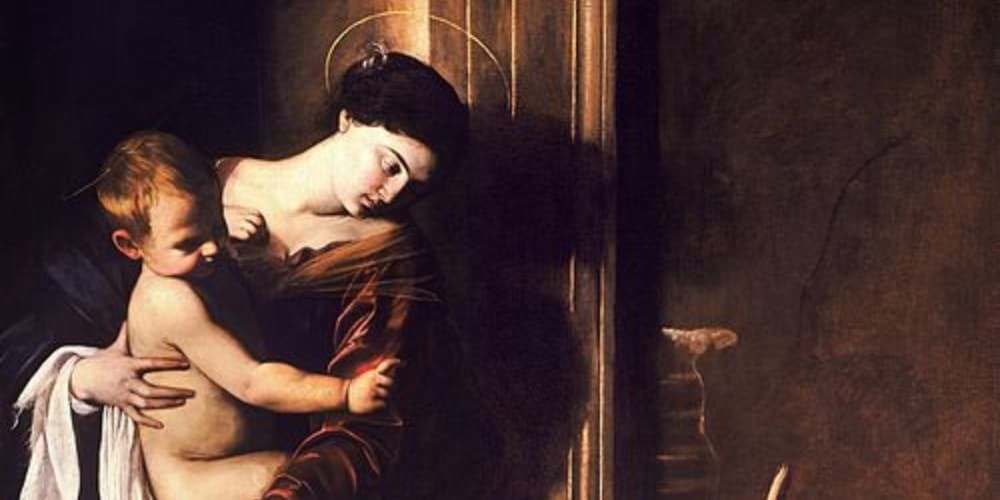
Madonna dei Pellegrini
Here you can admire:
- The Madonna dei Pellegrini
Admission is free.
Not far from the Church of San Luigi dei Francesi, on Corso Rinascimento, we find the Church of Sant’Agostino. Here, near the entrance, in the first chapel on the left, you will find the Madonna dei Pellegrini. Two pilgrims, realistically depicted with bare and dirty feet and with two wayfarer’s sticks, are kneeling before a beautiful Madonna with a child in her arms. Mary’s face is inspired by a famous courtesan of the time.
7. Basilica of Santa Maria del Popolo
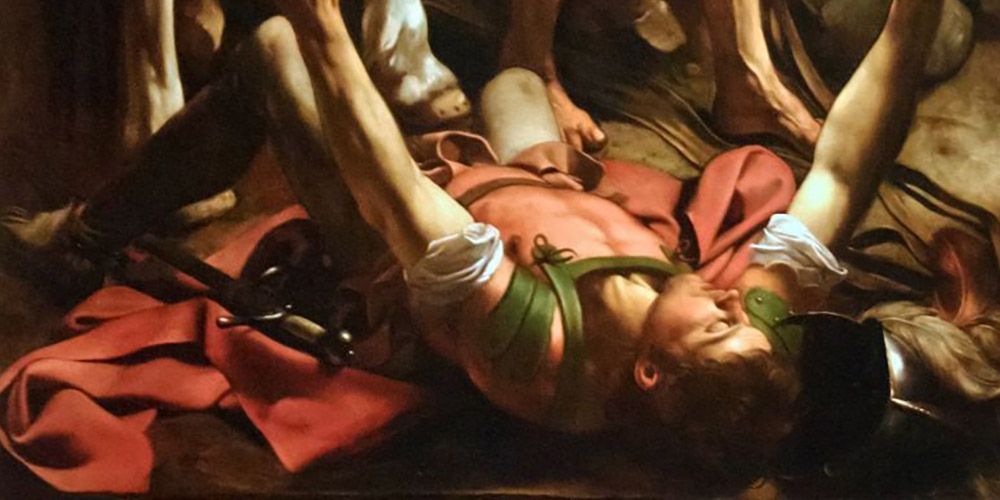
The Conversion of Saint Paul
Here you can admire:
- The Conversion of Saint Paul
- The Crucifixion of Saint Peter
Admission is free
Walking along the entire Via di Ripetta in a beautiful walk in the heart of Rome, you will reach the Basilica of Santa Maria del Popolo, located in Piazza del Popolo. On the transept, in the Cerasi Chapel, The Conversion of Saint Paul and The Crucifixion of Saint Peter are exhibited. The saints are depicted in two different moments of their lives: Saint Paul at the beginning of his spiritual life, at the moment of revelation, and Saint Peter, an instant before his martyrdom. However, what unites them is the divine light, which has the power to transport them into the spiritual dimension in contact with the divine.
6. Galleria Doria Pamphili
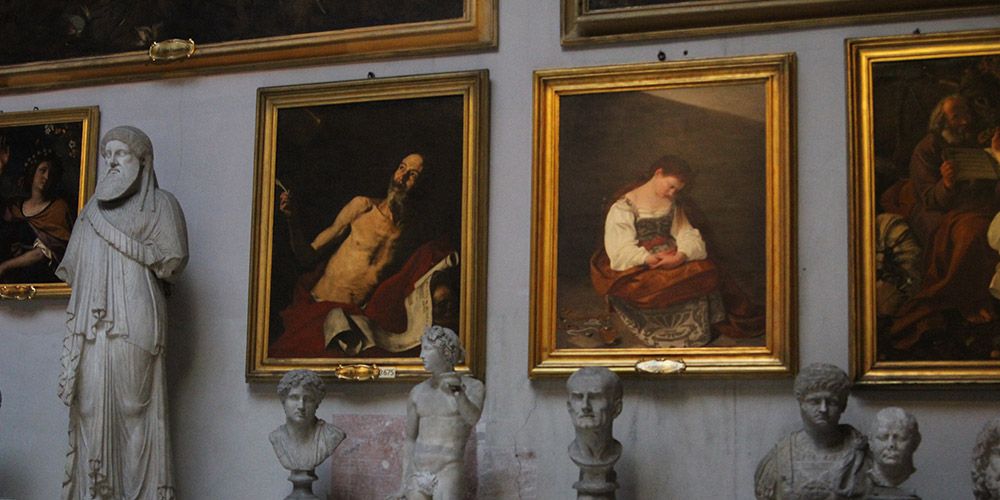
Doria Pamphili Gallery
Here you can admire:
- The Penitent Magdalene
- The Rest on the Flight into Egypt
- Saint John the Baptist
Admission fee required.
Let's move to the Galleria Doria Pamphilj, here you will be lucky enough to see 3 works by Caravaggio: The Penitent Magdalene, The Rest on the Flight into Egypt and Saint John the Baptist. In the first work, Magdalene is curled up on the ground, at her side you will notice a necklace, a symbol of the abandonment of earthly goods and the desire for recollection towards a different life.
The wonderful Rest on the Flight into Egypt represents one of the masterpieces of Caravaggio's youthful phase, the golden section is perfect, on the right side the Virgin with the Child, on the left side Joseph intent on holding the score of the Song of Songs to the angel playing the violin, turning his back on us. The work of Saint John the Baptist is one of the two identical versions present in Rome, probably one of the two is a copy, the original of which we are certain of the hand of Caravaggio is the one preserved in the Capitoline Museums.
5. Borghese Gallery
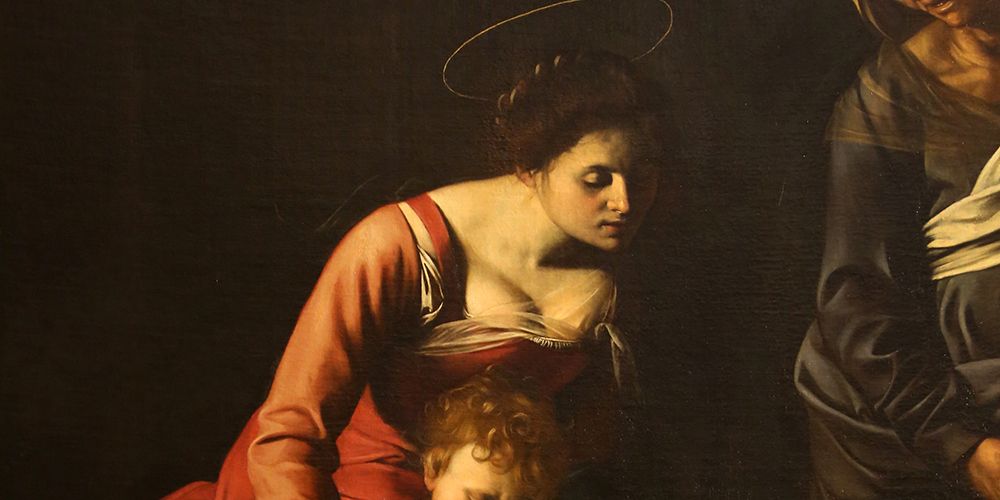
The Madonna dei Palafrenieri
Here to admire:
- Boy with a Basket of Fruit
- Sick Bacchus
- Madonna of the Palafrenieri
- David with the Head of Goliath
- Saint Jerome
- Saint John the Baptist
Admission fee required
The Borghese Gallery houses the largest collection of Caravaggio's works in Rome, in this rich and splendid museum are exhibited: Boy with a Basket of Fruit, the Sick Bacchus, the wonderful Madonna of the Palafrenieri, David with the Head of Goliath, Saint Jerome and Saint John the Baptist. In the Boy with a Basket of Fruit the exquisite richness of the details of the still life holding the boy in his arms is striking, the leaves and fruit are particularly realistic to the point of almost seeming like a photogram.
Particularly important are the Madonna of the Palafrenieri and David with the Head of Goliath which belong to Caravaggio's mature period. Another particular point that you will notice is that in a couple of works Caravaggio represents himself, specifically in Goliath and in the Sick Bacchus. Caravaggio is one of the most famous painters who stayed and worked in Rome and a visit to the Borghese Gallery will be a bath in his art.
Discover Borghese Gallery4. Vatican Museums
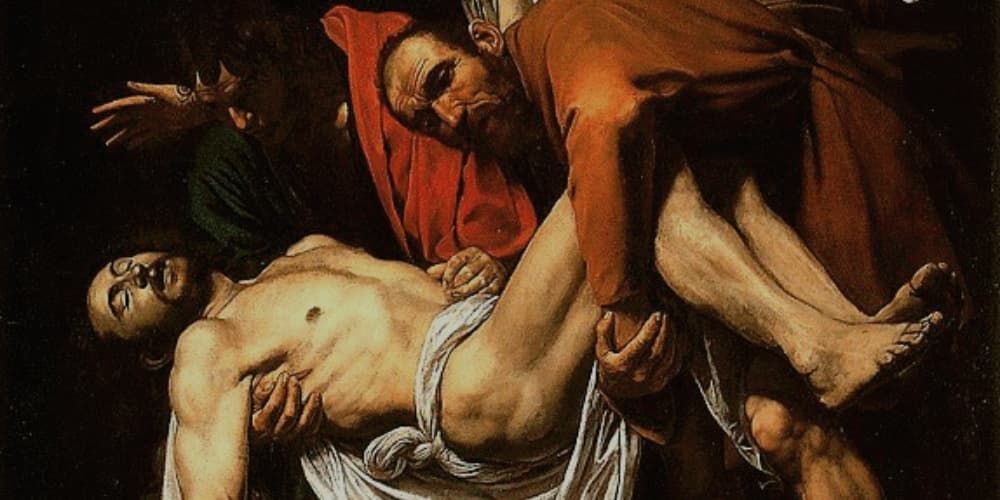
Deposition of Dead Christ
Here you can admire:
- The Deposition of Dead Christ
Admission fee required.
The next stop on our Caravaggio artistic tour in Rome is the Vatican Museums, clearly the immense museum complex of the Vatican Museums makes sense to visit if you are also interested in the rest of the artistic heritage it contains. The work by Caravaggio exhibited here is extremely significant, it is the Deposition of the Dead Christ, this work immediately created unanimous consensus, the particularly realistic composition has a perfect proportion, it immediately transfers an empathy with the characters in the work to the observer.
3. Palazzo Barberini
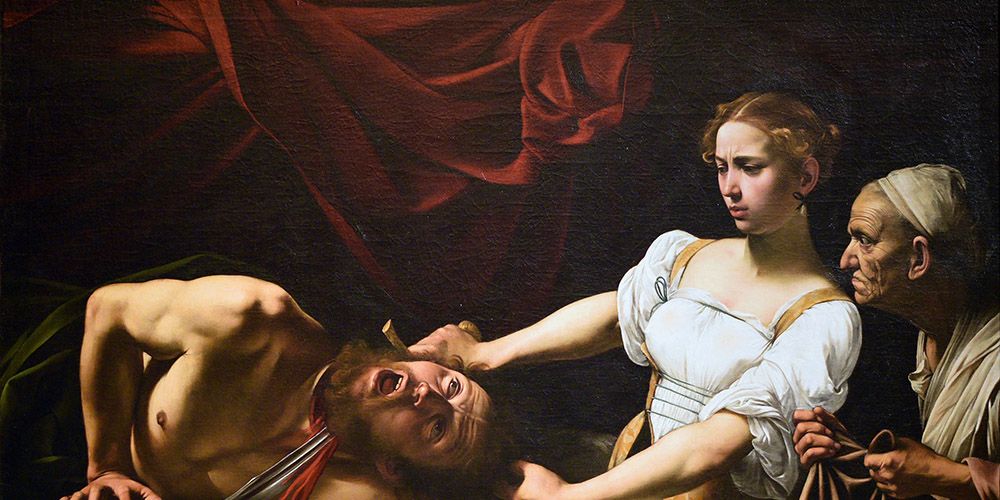
Judith and Holofernes
Qui per ammirare:
- Giuditta e Oloferne
- Narciso
Ingresso a pagamento
Let's move on to the wonderful building of Palazzo Barberini, this museum houses two works by Caravaggio, the first is Judith and Holofernes, this work soon became a point of reference for the entire current that was inspired by Caravaggio in the following years, in particular we can find analogies with Artemisia Gentileschi. The second work that you will find in Palazzo Barberini is Narcissus, Narcissus is reflected in the water admiring his reflection, a poetic and dreamy work. As you can see, following this guide it will not be difficult to see all of Caravaggio's works in Rome. If you are at Palazzo Barberini, remember that on display until July 6th is Caravaggio 2025, an unprecedented retrospective on the artist, which brings together an exceptional number of autographed paintings.
Discover the Caravaggio exhibition at Palazzo Barberini2. Capitoline Museums
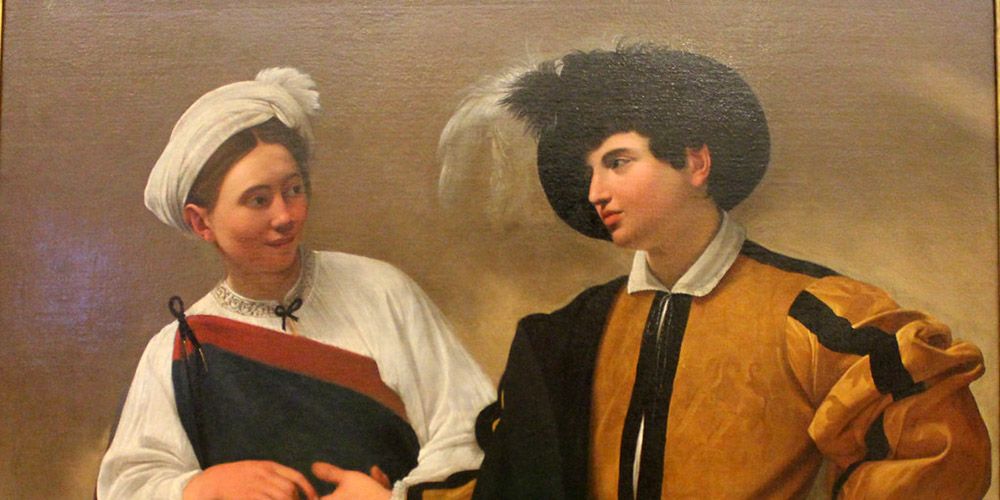
The Fortune Teller
Here you can admire
- Fortune Teller
- Saint John the Baptist
Admission fee required
We close our tour with the last two stops, the first is the Capitoline Museums, these museums boast a rich pictorial collection, among which we find two works by Caravaggio: the Fortune Teller and St. John the Baptist. The Fortune Teller is among the most smiling works by Caravaggio, note the exchange of glances between the two characters and pay attention to the gesture of the gypsy who tries to take the ring off the wealthy young man, a bit like Robin Hood. The second work present here is the original canvas of St. John the Baptist that we had already encountered at the Doria Pamphilj Gallery.
The last stop takes us to the National Gallery of Ancient Art of Palazzo Corsini, this museum houses a further version of St. John the Baptist, very different from the one just observed at the Capitoline Museums. Here we are at the end of our tour of Caravaggio's masterpieces in Rome, surely now you will be a true expert!
1. National Gallery of Ancient Art of Palazzo Corsini
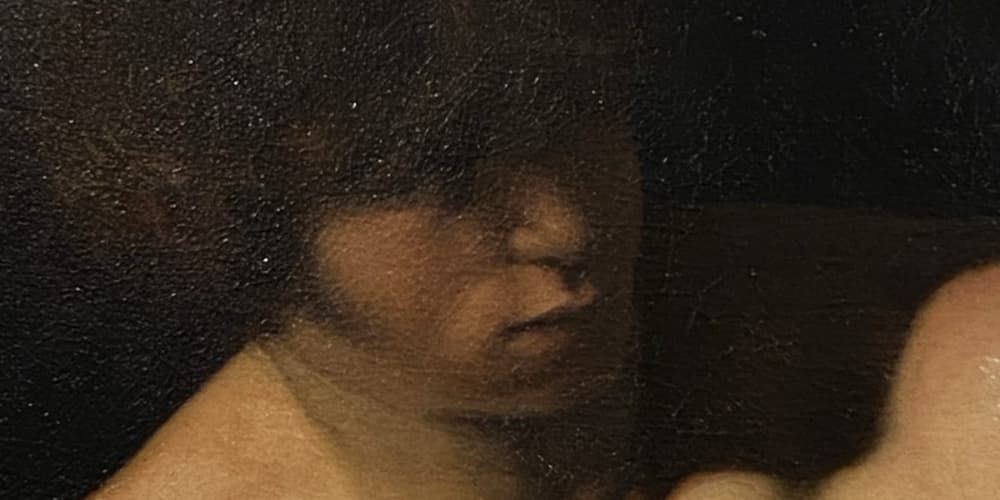
Saint John the Baptist ( Palazzo Corsini)
Here you can admire:
- Saint John the Baptist
Admission fee required.
The last stop takes us to the National Gallery of Ancient Art of Palazzo Corsini, this museum houses a further version of St. John the Baptist, very different from the one just observed at the Capitoline Museums.
Here we are at the end of our tour of Caravaggio's masterpieces in Rome, surely now you will be a true expert!
About the author
Written on 28/04/2025

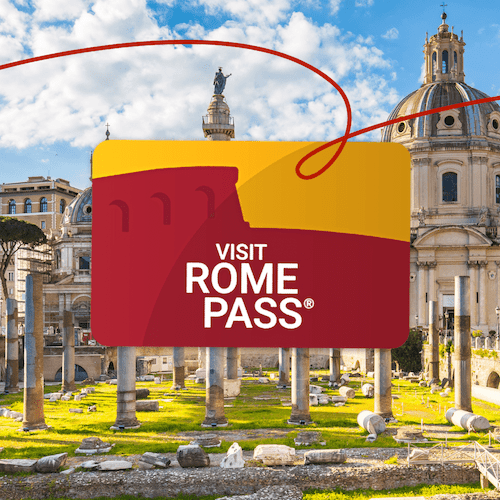
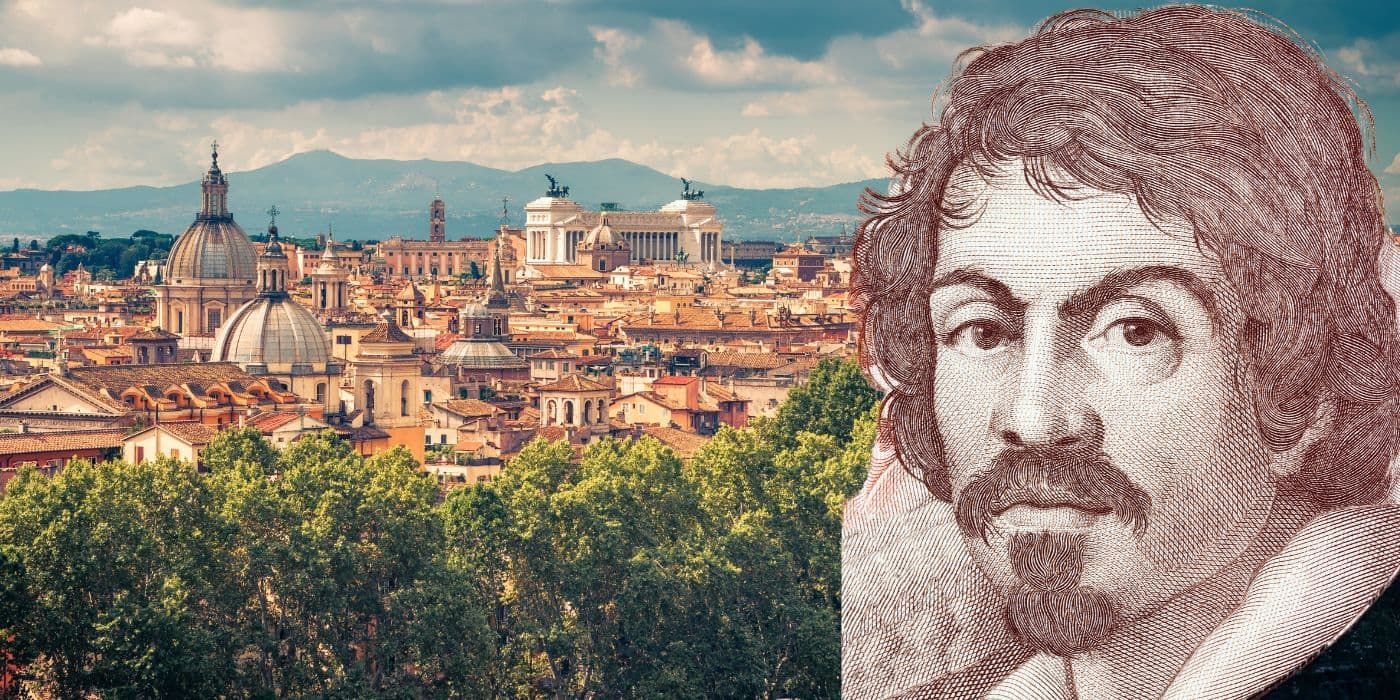

Chiarastella Campanelli
Are you ready to discover where all the Caravaggio works are in Rome?